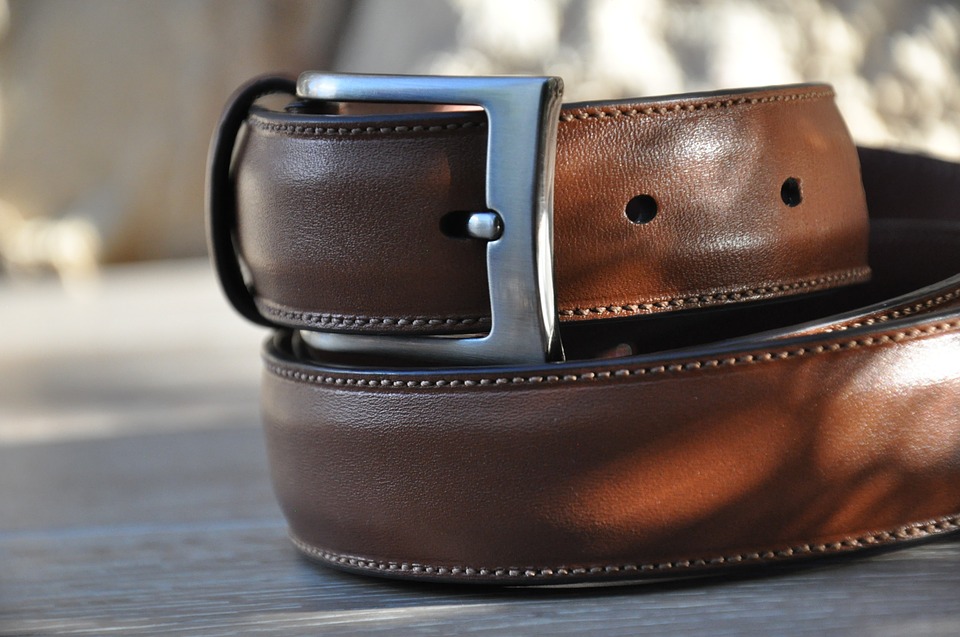
by Leather | Fashion, Leather Accessories |
Few accessories (if any) offer the same level of versatility as a genuine leather belt. They can be worn for casual occasions, formal occasions, and anything in between. Furthermore, leather goes well with just about any color and style, making them a simple yet effective way to enhance your appearance on the fly. But like all genuine leather garments and accessories, certain attention must be given to a leather belt in order to preserve its attractive characteristics. Break it in Leather belts often feel stiff at first, which is completely normal and should cause no reason for concern. This is due to the fact that it’s still new and hasn’t been broken in yet. To fix this problem, try wearing the belt for a “test run” around your home. It may feel and even look awkward at first, but this will soon go away. And once your leather belt has been broken in, it will look right and be more comfortable to wear. Watch the Humidity Like all leather garments and accessories, leather belts are susceptible to moisture damage when placed or otherwise stored in humid environments. Typically, when the relative humidity level exceeds 50%, it can damage leather. The excess moisture vapor in the air will seep into its pores, promoting the formation of mold and mildew. To protect your leather belt from this type of damage, it’s recommended that you store it in a climate-controlled environment with a relative humidity of 50% or less. Following this tip will go a long ways in protecting your leather belt from moisture-related damage. Clean it Of course, you should also...

by Leather | Leather Jackets |
Real Leather Holds its Value Genuine leather garments and products typically hold their value, more so than faux leather. In the rare event that you decide you no longer want your leather jacket, you can always sell it — usually fetching the same or almost as much money for which you paid. This is in stark contrast to faux leather, which does not hold its value. Faux Leather is Bad for the Environment (and Your Health) No, that’s not a typo. Certain types of faux leather, particularly those made with polyvinyl chloride (PVC), are actually bad for the environment and your health. PVC is a harsh synthetic chemical that’s been linked to cancer. This doesn’t necessarily mean that wearing a faux leather jacket will give you cancer, but do you really want to expose yourself to these harsh chemicals? Real Leather is Breathable Although invisible to the naked eye, real leather contains thousands upon thousands of holes (known as pores) on the surface. These holes allow leather to breathe, absorbing and releasing moisture from the surrounding environment. Unfortunately, faux leather lacks this feature, which is one of the many reasons why people tend to choose genuine leather jackets over their faux counterpart. Real Leather is More Comfortable to Wear This alone should be reason enough to choose real leather over faux leather. While they may look similar in terms of appearance, genuine leather jackets and garments are significantly more comfortable than faux leather. They are softer, more supple, and have a certain “squishiness” that’s ultra-comfortable. Real Leather Smells Nice It’s hard to describe the pleasant aroma of real leather...

by Leather | Leather Jackets |
Congratulations on your decision to invest in a genuine leather jacket. While fashion trends come and go, it’s safe to leather is here to stay. Leather jackets have been worn by men and women alike for over a century, and even today they remain one of the most popular styles of jackets on the market. But if you’re going to buy a leather jacket, you’ll want to make sure it’s the right fit. Sleeve Length One of the first things to consider when choosing a leather jacket is the sleeve length. If the sleeves are too short or too long, the jacket simply won’t look right; thus, you should choose a different size. Much like a standard suit jacket, the sleeves of a leather jacket should fall just shy of your wrist bone. Ideally, you should still be able to see your wrist bone, as this indicates the jacket is a good fit. Keep in mind, however, that too much space between your wrist bone and the jacket’s sleeve indicates the sleeves are too long. There should be a very small amount of space between your wrist bone and the sleeve. Chest Size You should also consider the chest size when choosing a leather jacket. A properly fitted jacket should allow you to rise both your arms to your sides, bring them forward, and place them down by your sides with ease. Jackets that are too small will restrict these movements, indicating you need a bigger jacket. Feel free to stand up and move around when trying on a leather jacket. Are you able to move freely and unrestricted?...







Recent Comments